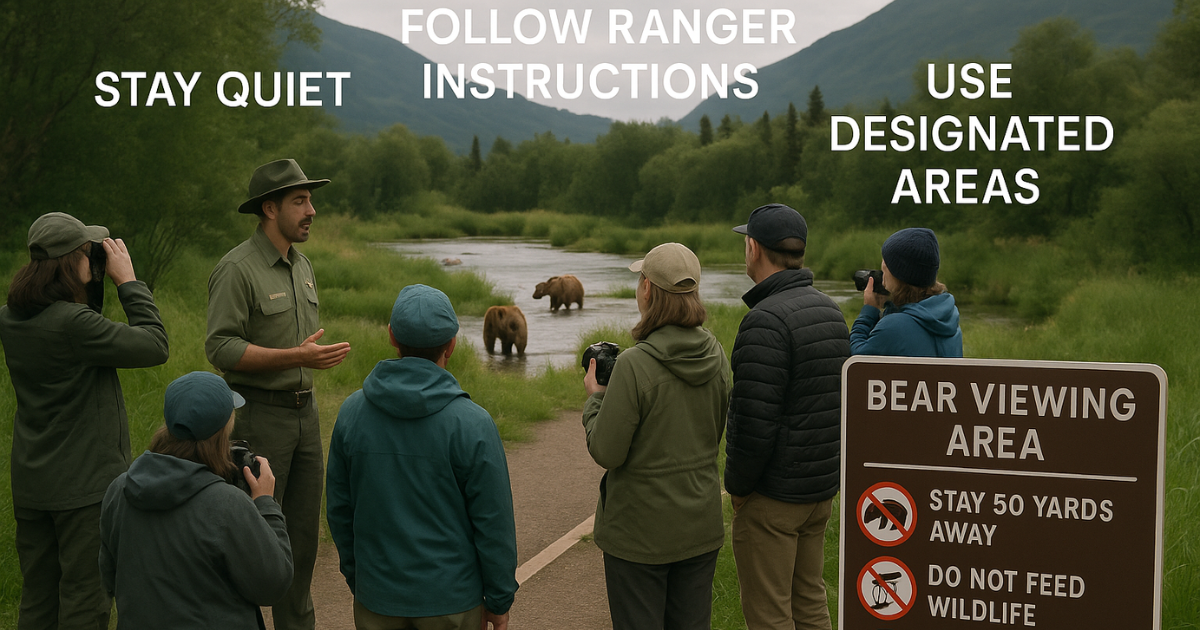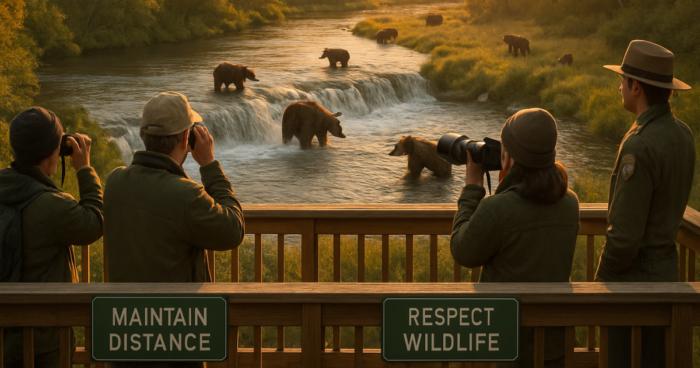Alaska’s breathtaking wilderness draws thousands of visitors eager to experience bear viewing firsthand. This booming wildlife tourism offers unique opportunities but also carries risks for both bears and their fragile habitats. Understanding the wildlife tourism impact and how to view bears ethically in Alaska is essential for sustainable conservation efforts. Ethical wildlife viewing balances human curiosity with respect for animal welfare and habitat integrity, ensuring these majestic creatures continue to thrive undisturbed. By adhering to wildlife conservation ethics and ecotourism principles, visitors and tour operators can minimize human impact on wildlife behavior and promote long-term coexistence.
Principles of Ethical Wildlife Viewing in Alaska
Ethical wildlife viewing Alaska is grounded in respect for the animals and their environment. One key principle is maintaining a safe and non-intrusive distance to avoid disrupting bears’ natural activities. Following established bear watching guidelines helps prevent wildlife disturbance prevention and supports peaceful observation.
Responsible tourism emphasizes minimizing noise, refraining from feeding wildlife, and avoiding behaviors that could stress or habituate bears. Visitor compliance with ecotourism standards and park visitor guidelines safeguards the health and safety of both humans and bears.
Tour operators play a crucial role in educating tourists, ensuring groups remain small and informed about the importance of respecting natural behaviors. Together, these practices foster a positive and sustainable wildlife viewing experience.
Impact of Tourism on Bear Behavior and Habitat
Scientific research on the impact of tourism on bear behavior reveals that increased human presence can elevate bears’ stress levels and alter their natural routines. Bears exposed to frequent visitors may change their feeding habits, movement patterns, and habitat use, often avoiding preferred feeding sites.
The effects of human-bear interaction include habituation, where bears lose fear of humans, increasing the risk of conflicts. Conversely, some bears become more elusive, retreating to less suitable habitats, which can lead to habitat fragmentation and reduced access to vital resources.
Understanding these dynamics through behavioral ecology studies informs conservation strategies that minimize negative tourism effects. By managing visitor activities carefully, Alaska can preserve healthy bear populations and intact ecosystems.
Regulations and Best Practices for Bear Viewing in Alaska

Alaska enforces strict bear viewing regulations to protect both wildlife and visitors. These legal frameworks mandate minimum viewing distances, restrict feeding, and regulate group sizes, ensuring safe and responsible observation.
Sustainable tourism in bear habitats involves cooperation between state agencies, tour operators, and local communities. Adhering to wildlife management policies and protected area guidelines helps maintain natural bear behavior and habitat integrity.
Tour operators and visitors are encouraged to participate in visitor education programs that promote adherence to these standards, contributing to effective stewardship of Alaska’s bear populations.
Educating Tourists for Safe and Respectful Bear Encounters
Effective tourist education on bear safety is vital in preventing negative encounters and fostering a culture of conservation. Education programs teach safety protocols, such as carrying bear spray, recognizing bear behavior, and knowing how to react during an encounter.
Public outreach initiatives emphasize conflict mitigation strategies, reducing stress for both bears and people. Informed visitors are more likely to follow guidelines that protect wildlife and themselves, supporting long-term conservation goals.
Species-Specific Considerations: Brown Bear vs Grizzly Bear Responses to Tourism
Brown bears and grizzly bears may respond differently to tourism pressures due to variations in their habitat preferences and social behaviors. Brown bears, often found in coastal areas with abundant salmon, may tolerate more human presence than inland grizzlies, who can be more sensitive to disturbance.
These differences affect their ecological adaptability and risk of habituation or stress under tourism impact. Understanding these nuances improves management practices tailored to each species.
Conclusion
Recognizing the wildlife tourism impact and committing to viewing bears ethically in Alaska are critical for safeguarding these iconic animals and their ecosystems. Sustainable tourism practices help reduce disturbance, protect habitats, and promote lasting coexistence between humans and bears. Visitors and operators alike must embrace conservation ethics to ensure Alaska’s bear populations thrive for generations to come.


